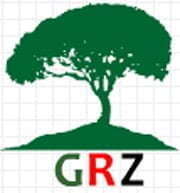Creation and access to green spaces promotes individual human health, especially in therapeutic contexts among those suffering traumatic events. But what of the role of access to green space and the act of creating and caring for such places in promoting social health and well-being? Greening in the Red Zone interrogates the notion and documents instances of creation and access to green spaces conference resilience and recovery in systems disrupted by violent conflict or disaster.
Publications
Access to green space and the act of creating green spaces is well understood to promote human health, especially in therapeutic contexts among individuals suffering traumatic events. Less well understood, though currently being studied, is the role of access to green space and the act of creating and caring for it in promoting neighborhood health and well being as related to social-ecological system resilience. An important implication of Greening in the Red Zone lies in specific instances of greening and the presence of greened spaces in promoting and enhancing recovery, and perhaps resilience, in social-ecological systems disrupted or perturbed by violent conflict or other catastrophic disaster. This edited volume provides illustration and interpretation of these phenomena through a series of cases or examples of Greening in the Red Zone, which will explore how access to green space and the act of creating green spaces in extreme situations might contribute to resistance, recovery, and resilience of social-ecological systems.
A chapter in Campbell, Lindsay K.; Svendsen, Erika; Sonti, Nancy Falxa; Hines, Sarah J.; Maddox, David, eds. Green readiness, response, and recovery: A collaborative synthesis. Gen. Tech. Rep. NRS-P-185.
Presentations
A “Chats in the Stacks” book talk given on Sept 11th, 2015 at Albert R. Mann Library at Cornell University.
A guest lecture at the Maxwell School at Syracuse University in 2014.
A guest lecture at CUNY School of Law in 2012.


